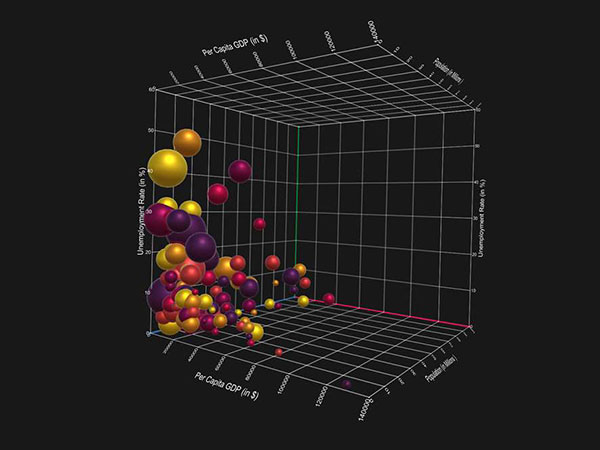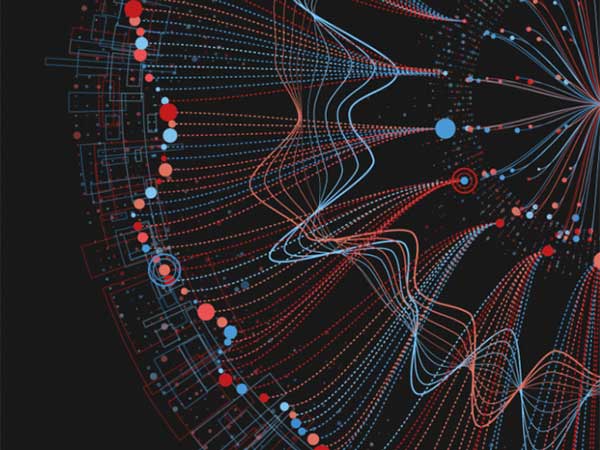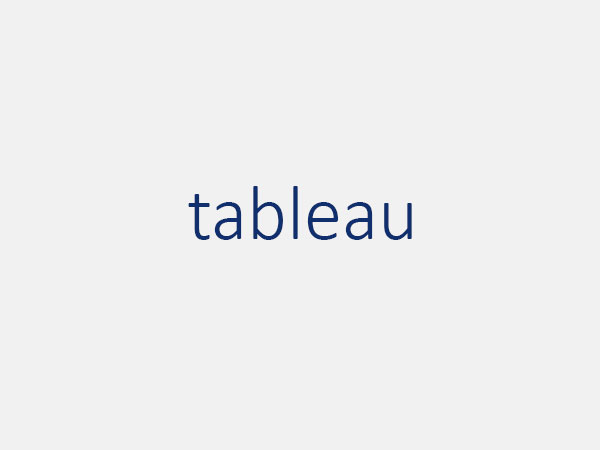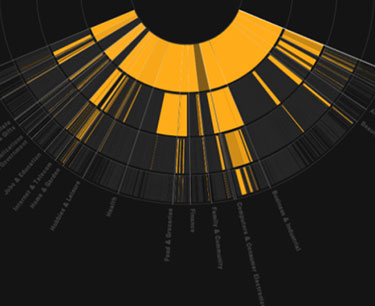Representation of data via maps is a rapidly developing area of visualization that has many practical applications. Today, we have a wide range of innovative tools for a visual representation of geographical data for maps and other purposes. This article offers you a list of tools for mapping that make it easy to visualize data and share them with others.
1. Google Maps and Google Earth
The first item on our list is a mapping technology we use every day. Google Maps serve us well in helping to locate places while Google Earth is an excellent tool to explore our home planet. To develop Google Earth, developers created a 3D interface view of the globe that allows to zoom in and investigate certain areas.
In terms of visualization, our beloved Google Maps and Google Earth’s unique capabilities are a result of a process of combining KML data. This process allows overlaying own visual data onto 3D mapped views.
KML files were also recently added to Google My Maps service designed to create custom maps to publish online. This is a great tool for displaying custom maps on websites because it is a simple and user-friendly WYSIWYG editor.
Another useful tool provided by Google to create rich and customizable maps is Google Maps Javascript API. It allows building highly customizable visualization using your own content.

2. Someka Heat Maps
This tool is one of the most popular solutions for heat maps, and for a good reason. Someka Heat Maps can be generated in Excel in a very user-friendly way: just input your data in the app the map will be generated automatically. Among other useful features are automatic coloring of different geographical units.
Since the whole operation is done in Excel, working in Someka is simple and practical. In addition to geographic heat map generators, the developer also provides a number of other Excel solutions, including budget templates and calendars and timesheets. 
3. Tableau
The next tool is a project from a well-known company Atheon Analytics. Tableau has been developed to improve understanding of data as information is presented in easily-digested forms and consistent forms. It is suitable for various users and can be set to operate as an enterprise-wide visual analytics tool.
Visualoop has data visualization made with Tableau to demonstrate the capabilities of the app.

4. OpenHeatMap
This tool is another super simple solution for those in need of interactive online maps. To create a map, a spreadsheet should be uploaded. Then, OpenHeatMap generates the result within seconds, and you receive an animated and interactive view of a geographical area. Such an effective operation is provided by data from Google and OpenStreetMap.
The map can be shared with others using email, Facebook, Twitter, LinkedIn, and many other ways. See an example map of U.S. unemployment by county done with OpenHeatMap here. 
5. InstantAtlas
Highly-interactive mapping is possible with this tool. InstantAtlas is a package of software that represents a powerful option for visualization of different maps. According to the official site of the developer, the tool is used by public health analysts, data managers, GIS experts, government departments and non-profit organizations to present data on diseases, trends, statistics in various geographical areas. Organizations like professional essay services also use this tool to map locations of a target audience.
For example, this public health interactive map example shows prevalence and other statistics related to a disease in the UK. It represents a great source of information for public health policy makers and healthcare providers. 
6. Polymaps
Another user-friendly tool that allows creating interactive, dynamic maps right in web browsers. It’s a JavaScript library that supports various visual presentations for tiled vector data. Polymaps uses the geographical data and maps from OpenStreetMap and Bing, so it can load data specific to limited areas, such as individual streets and neighborhoods.
The Examples page on the official page of Polymaps showcases maps using a variety of vectors, including Pavement Quality, Population Density, Statehood, Unemployment, and Internet Usage. And it can be downloaded for free! 
7. ArcGIS
This powerful tool involves desktop mapping software that allows creating beautiful maps with little training. According to the developers of ArcGIS, it was developed to get users up and running in the shortest possible timeframe. That’s why the tool can be used by people with no extensive experience and on any device.
Given that ArcGis is a cloud-based service, anyone can use it and get access to hundreds of ready-to-use online maps that are updated every day.
One of the most popular ways in which ArcGis is used is to map different demographic information available from a census or a poll. However, any geospatial data can be utilized to create custom maps. For example, the tool helps operations at one of the world’s busiest airports in Atlanta. The airport has been modernized with ArcGis maps to quickly prioritize asset maintenance based on location and inform contractors about various events. 
8. Target Map
If you want to create a map as quickly as possible, try Target Map. This is a straightforward and yet powerful solution for data visualization that allows to design a map in minutes. By joining the community of mappers on the site, you can create both public and private maps. For example, you can use a spreadsheet to create a map and then export the data to PowerPoint. 
Conclusion
Whether you need to create a complex map for a healthcare organization from scratch or convert Excel data into a simple map, you will find a solution on this list. We hope these tools for data mapping will be useful for you.















